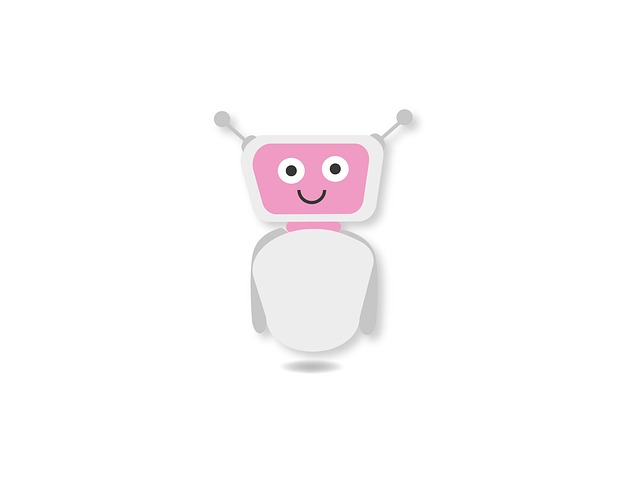Integrating a chatbot into an e-commerce platform offers 24/7 customer support, boosts sales through personalized product recommendations, and gathers valuable data for targeted marketing. Designing its interface should prioritize user-friendliness with clear navigation, essential features, and branding elements. Leveraging AI and NLP enables intelligent conversations and continuous learning based on user interactions, enhancing engagement and sales potential. Thorough testing ensures accurate performance before strategically integrating the chatbot for maximum engagement, ultimately driving conversions in e-commerce.
Creating a chatbot for your e-commerce platform can enhance customer experience and drive sales. This comprehensive guide walks you through every step, from understanding the fundamentals of chatbot technology for e-commerce to designing an intuitive interface. We explore the integration of AI and Natural Language Processing (NLP) for creating intelligent conversations that feel natural and human-like. Learn best practices for testing, deploying, and optimizing your chatbot to maximize its impact on your online store.
- Understanding Chatbot Basics for Ecommerce
- Designing a User-Friendly Chatbot Interface
- Integrating AI and NLP for Intelligent Conversations
- Testing, Deploying, and Optimizing Your Ecommerce Chatbot
Understanding Chatbot Basics for Ecommerce

In the dynamic landscape of e-commerce, integrating a chatbot can significantly enhance customer engagement and streamline operations. A chatbot in e-commerce serves as an interactive digital assistant, providing instant support to shoppers 24/7. It can assist with various tasks, from answering frequently asked questions (FAQs) about products or services to guiding customers through the checkout process.
By leveraging natural language processing (NLP), these chatbots understand user queries and respond in a conversational manner. They can offer personalized product recommendations based on browsing history and past purchases, creating a more tailored shopping experience. Additionally, they collect valuable customer data that can be used for targeted marketing campaigns, further optimizing sales and revenue for e-commerce businesses.
Designing a User-Friendly Chatbot Interface

When designing a chatbot for an ecommerce platform, creating a user-friendly interface is paramount. The chatbot should have a clean, intuitive layout that facilitates seamless interaction. Incorporate clear call-to-action buttons, such as “Search Products” or “Check Out,” to guide users through their shopping journey. A well-designed interface should also include features like product recommendations, easy navigation menus, and a search bar for quick product locaton.
Visual aesthetics play a significant role in user experience. Use familiar icons and branding elements to make the chatbot feel at home within your website. Ensure consistent color schemes and typography align with your brand identity. Additionally, consider incorporating interactive elements like images, videos, or animations to enhance visual appeal and engagement. The goal is to create an interface that not only supports the chatbot’s functionality but also enhances the overall user experience, ultimately driving conversions in the ecommerce space.
Integrating AI and NLP for Intelligent Conversations

Creating a chatbot that can engage in intelligent conversations requires integrating Artificial Intelligence (AI) and Natural Language Processing (NLP). These technologies empower your chatbot to understand user queries, interpret their intent, and respond contextually. In the realm of ecommerce, a chatbot equipped with AI and NLP can provide personalized shopping experiences. By analyzing customer interactions, it can offer product recommendations based on past purchases or browsing history.
For instance, an AI-driven chatbot can initiate conversations by asking about a user’s preferences, then leverage NLP to process their responses, enabling it to deliver targeted suggestions. This enhances user engagement and can increase sales. Moreover, these chatbots learn from each interaction, continually improving their ability to understand and respond to customer needs, making them invaluable assets for any ecommerce business.
Testing, Deploying, and Optimizing Your Ecommerce Chatbot

After developing your ecommerce chatbot, thorough testing is essential to ensure it performs optimally and effectively addresses customer inquiries. Conduct both automated and manual tests to identify any glitches or inaccuracies in its responses. Simulate various scenarios, including common customer queries, product recommendations, and potential issues, to gauge the chatbot’s performance. This process helps pinpoint areas that require refinement, ensuring a seamless user experience.
Once your chatbot demonstrates reliability and accuracy, it’s time to deploy it on your ecommerce platform. Strategically integrate the chatbot into key customer touchpoints, such as the website’s header or homepage, to maximize engagement. Monitor its performance closely after deployment, gathering feedback from actual users. Continuously optimize the chatbot based on user interactions and analytics, refining its responses, expanding its knowledge base, and improving its overall capabilities to enhance customer satisfaction and drive sales in your ecommerce business.
Creating a chatbot for your ecommerce platform is a strategic move that can significantly enhance customer engagement. By understanding the fundamentals of chatbot interactions, designing an intuitive interface, and leveraging AI with Natural Language Processing (NLP), you enable your bot to facilitate intelligent conversations. Once developed, thorough testing, deployment, and continuous optimization ensure the chatbot becomes a valuable asset in your ecommerce ecosystem, providing round-the-clock assistance to potential buyers. This guide’s steps will empower you to harness the power of chatbots in ecommerce.
